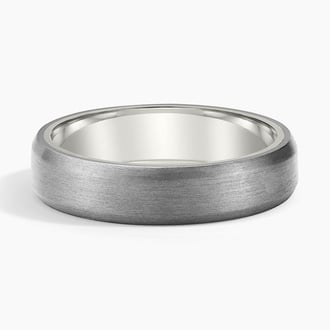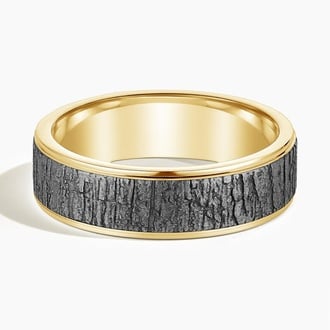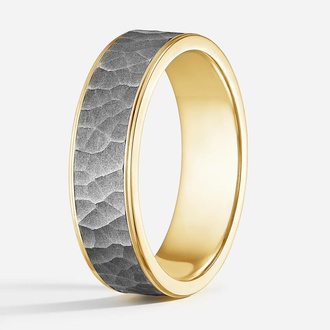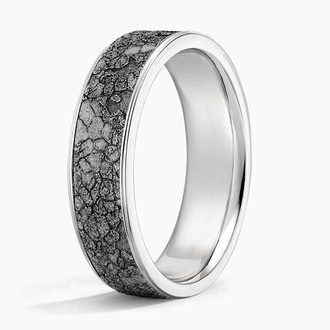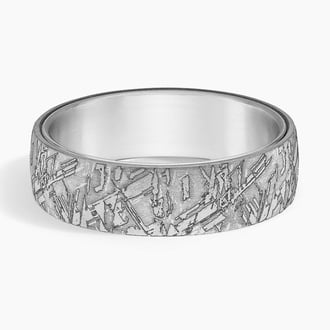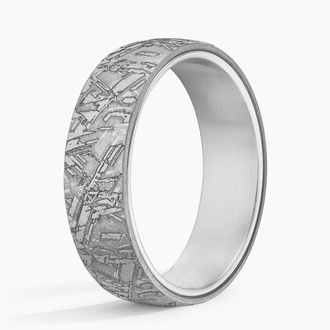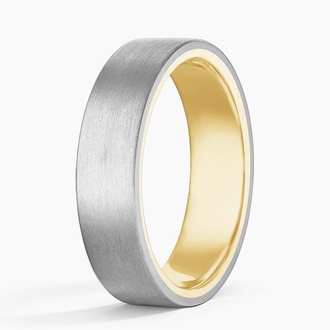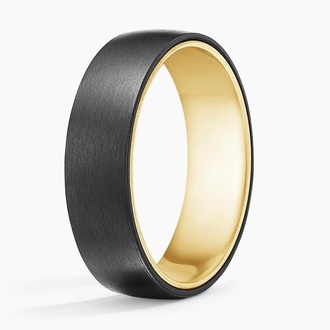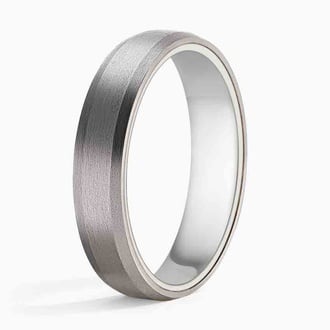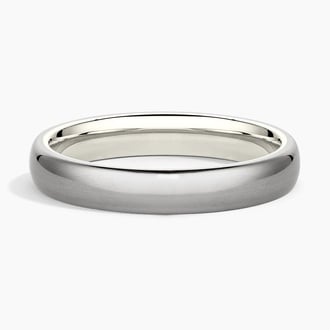A tantalum ring is a bold, edgy choice that is perfect for anyone looking to elevate their look with a modern twist. Previously known as tantalium, tantalum is a rare, blue-gray, and lustrous transition metal that is highly corrosion-resistant, making it an excellent material to craft wedding rings meant to be worn every day. Originally named after Tantalus, a character from Greek mythology, a tantalum band makes for a unique, trendy design with greyish hues that catch the light and the eye.
Our curated collection of tantalum rings features modern silhouettes and striking, trend-forward, textured details. Each tantalum wedding ring features a high-polish interior that aids in comfort for everyday wear, making these men's wedding band styles trend-forward without losing all-important practicality and wearability.
























